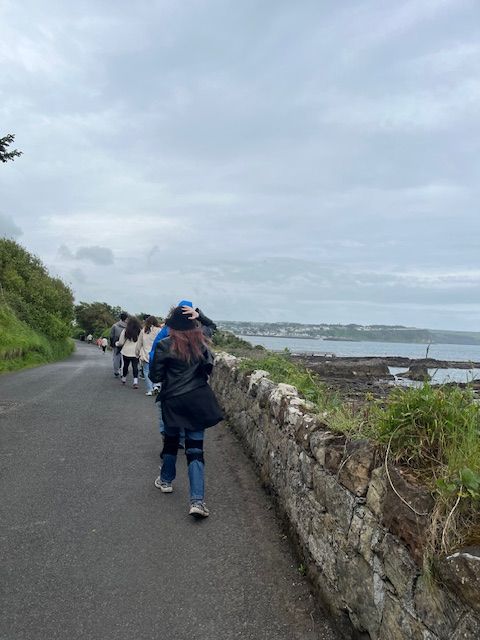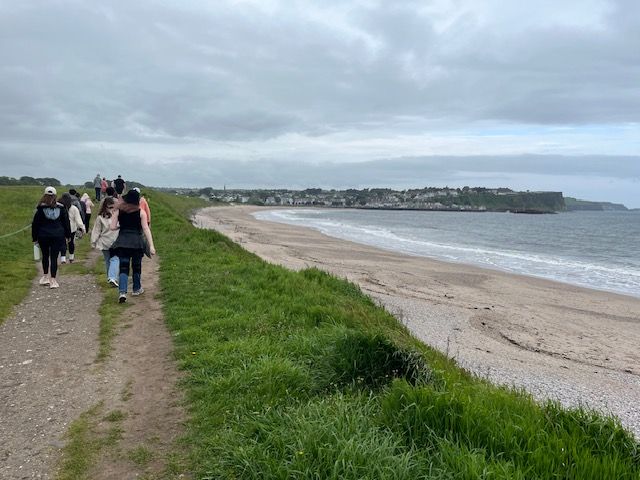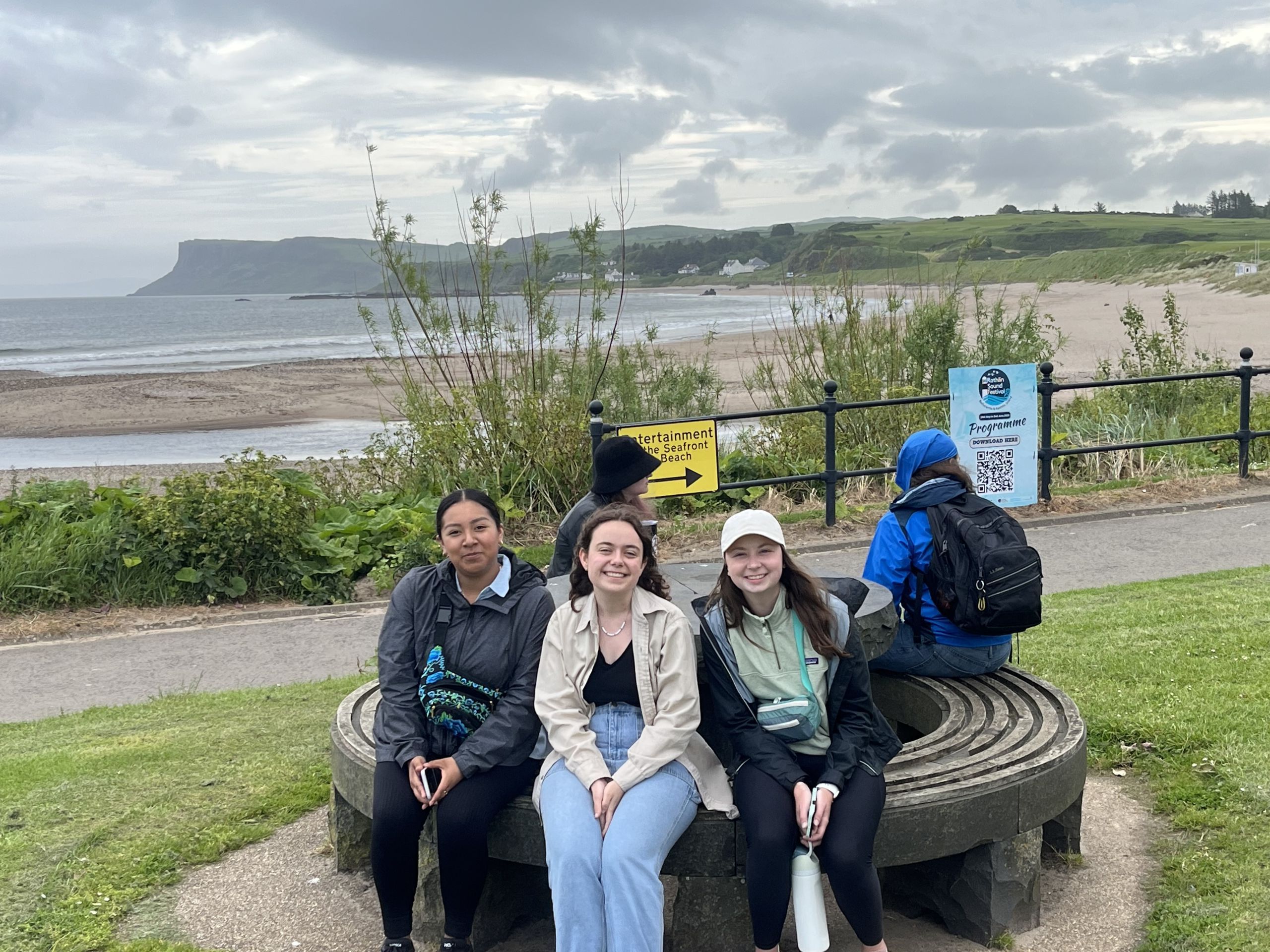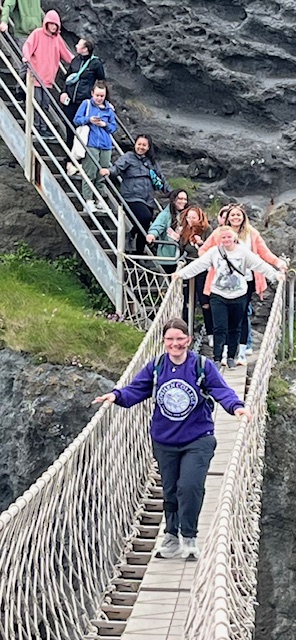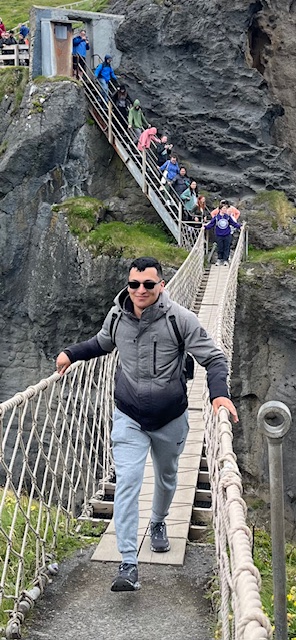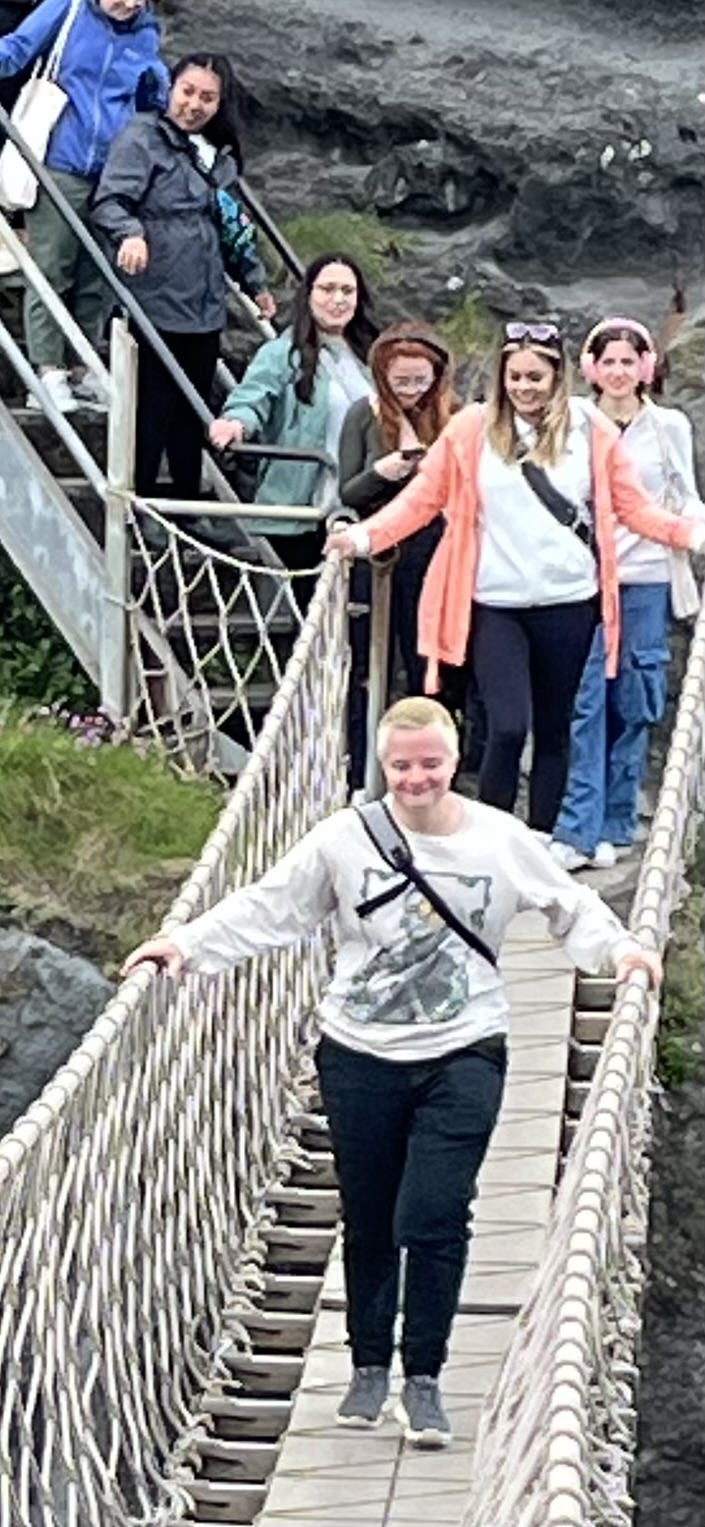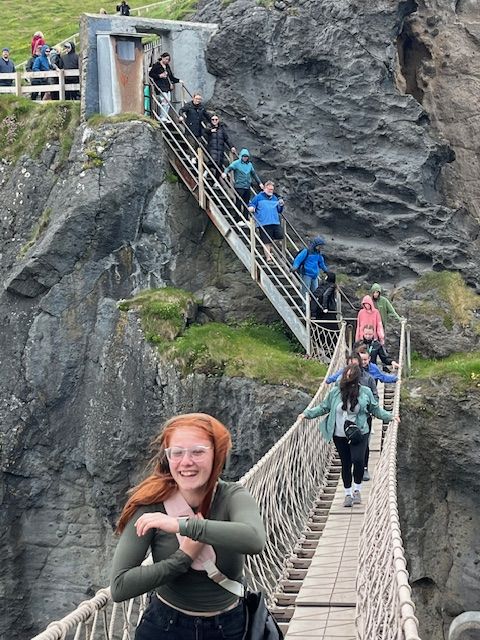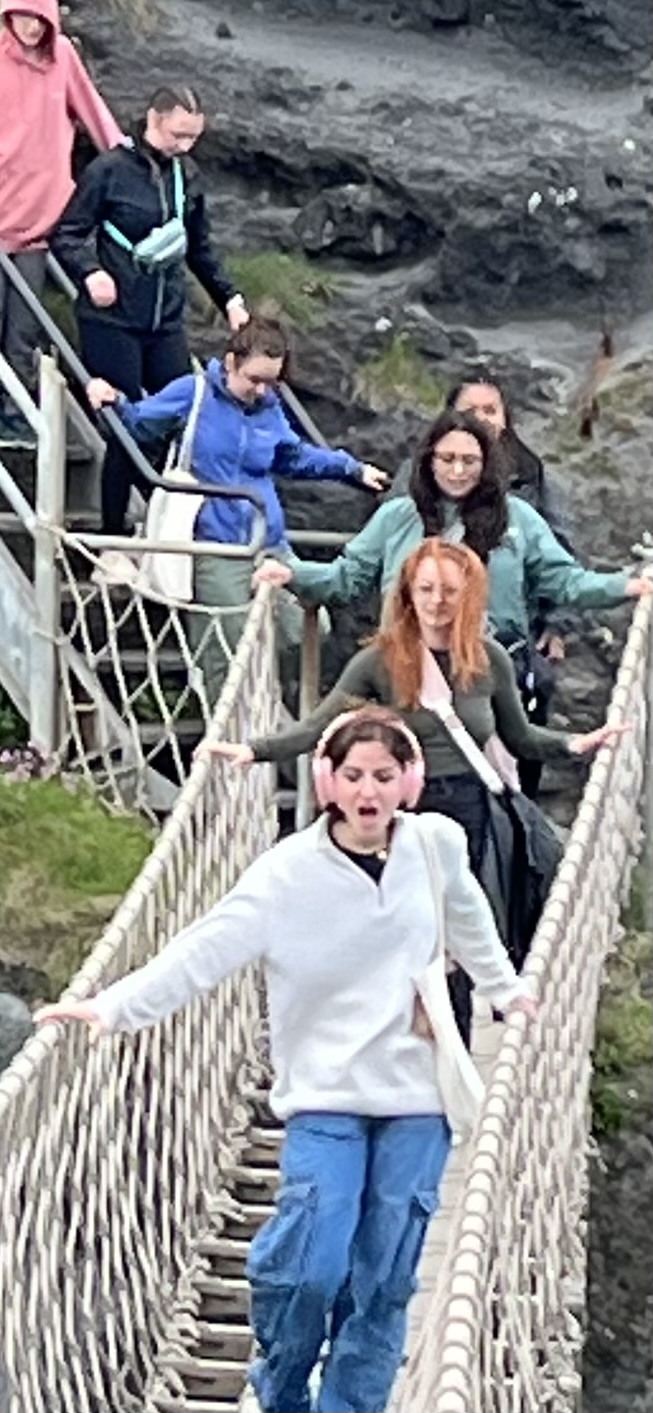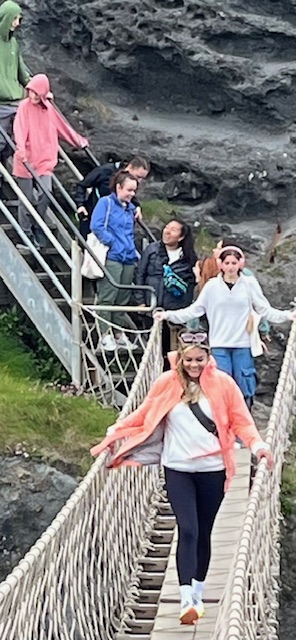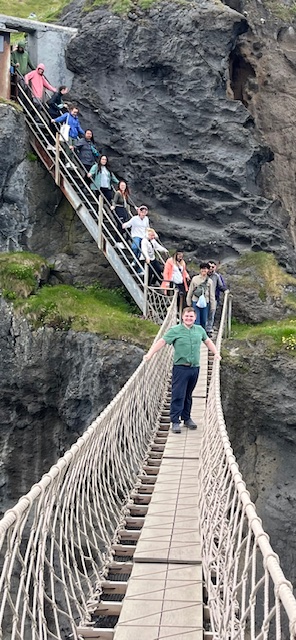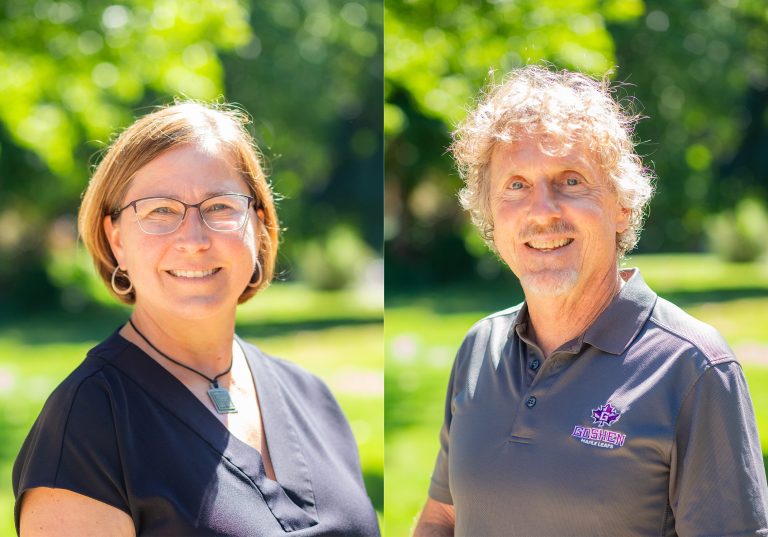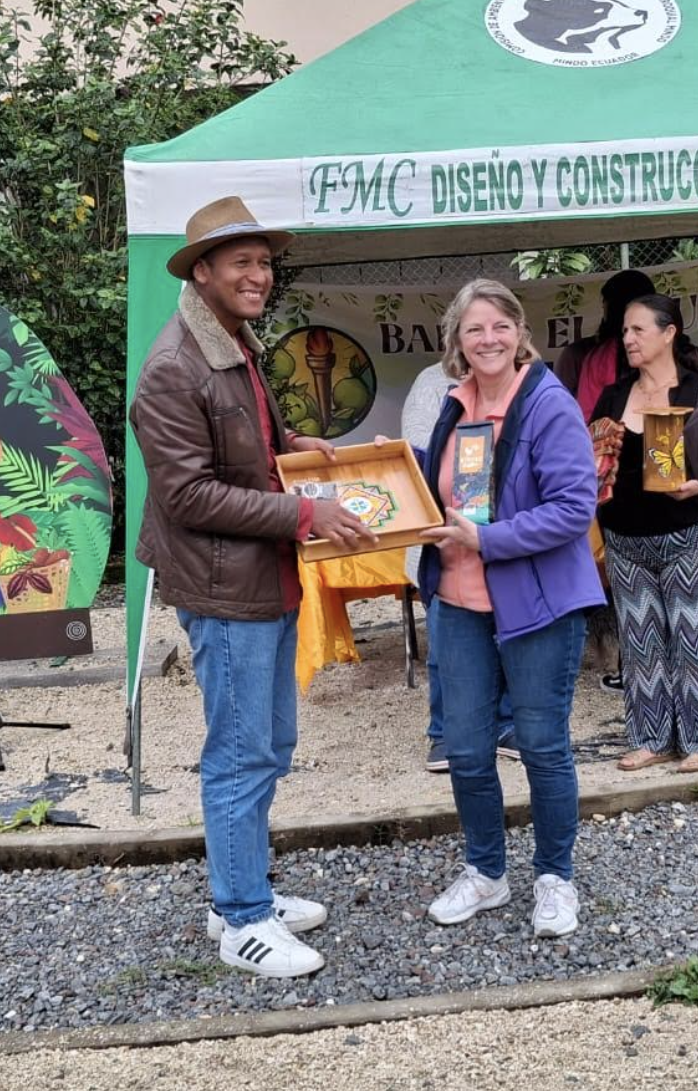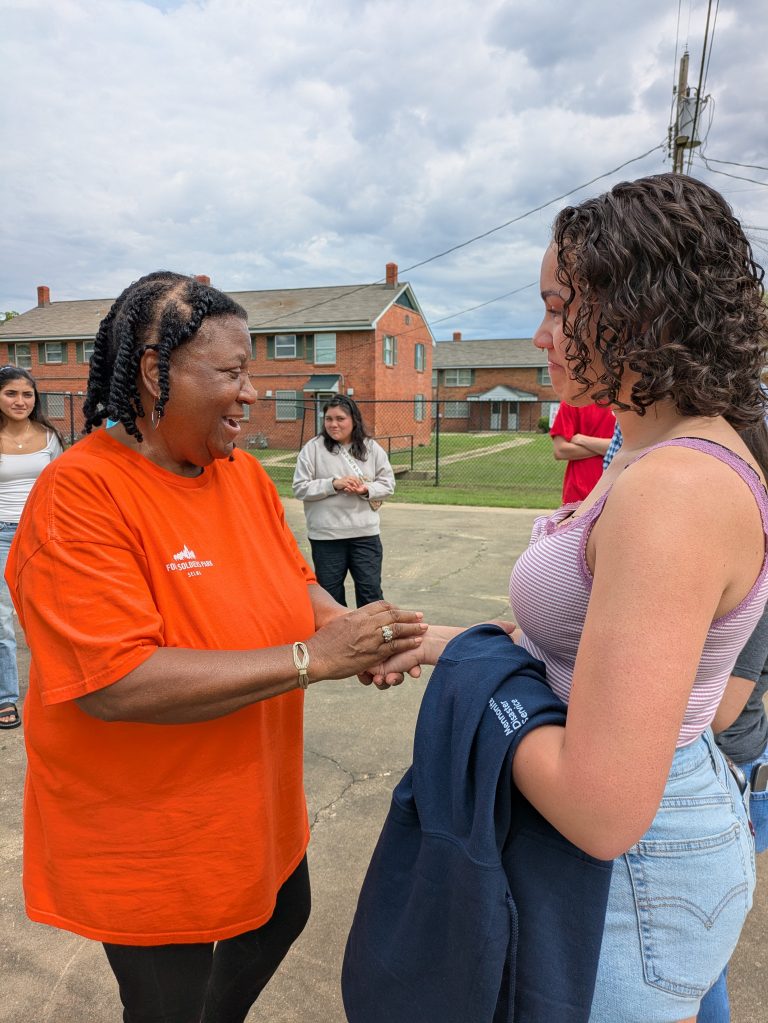Goshen College’s “SST for all” makes global education more accessible with flexible study options at home and abroad.

News
Walking the Carrick-a-Rede Rope Bridge
Jun 25 2024
On Friday, June 7, we gathered after breakfast to visit the Carrick-a-Rede Rope Bridge, one of the most popular sites along the Causeway Coast. The first bridge was built by salmon fisherman in 1755, but we crossed one built in 2008, established as a National Trust site. Visitors come from all over the world to walk the bridge, and to see the dramatic views, as well as the seabirds nesting in the cliffs.
I was just as eager to go on a field trip as the rest of my peers. Not only did we have another excuse to visit Ballycastle on the way down to the bus stop, but we also had the opportunity to make memories and share them with our parents and friends when we got home.
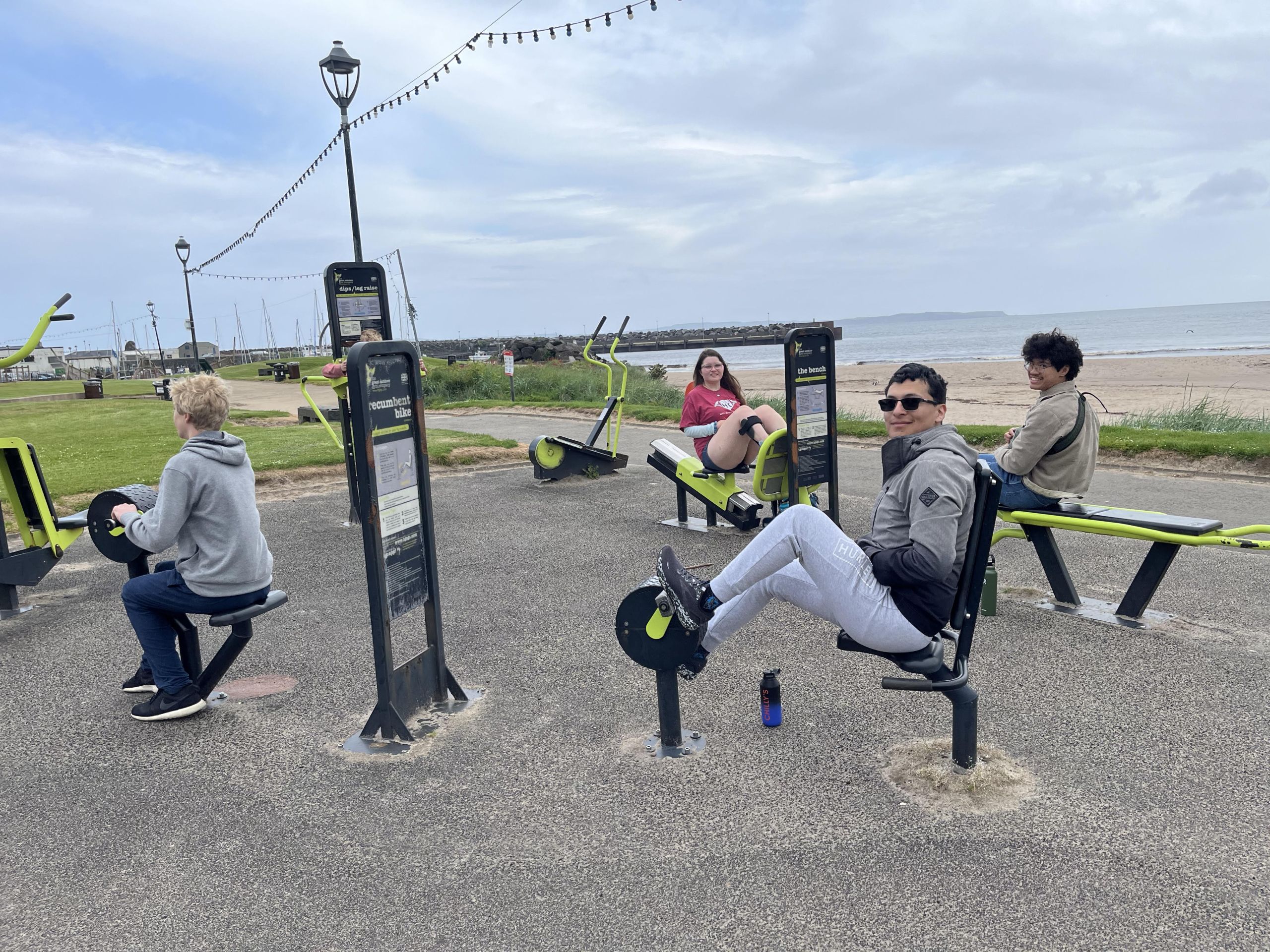
Ballycastle has outdoor exercise equipment near the beach. From left, Thomas, Madeleine, Rolando, and Brenton.
As we arrived at Ballycastle at noon, I slowly began to regret not eating breakfast as the mile walk was already making me hungry, and the packed lunches so kindly provided by Corrymeela didn’t agree with my stomach. Despite this, I held myself over on some chips and candies, and prepared for the bus ride to the bridge.
After thirty minutes of travel on a public transit TransLink bus, we walked down a hill to a tollbooth. Once the attendant let us pass, we walked down the steep decline, which spiraled along the shore of the North Atlantic Ocean. The hill to our right began to grow into a stone-faced cliff, and I noticed a coffee shop stationed near a parking lot.
After grouping up, we headed down to a grass-lined pathway, through which we were greeted by many passing seagulls and a beautiful and daunting view of the distant cliff sides that stretched in both directions, west to the Giant’s Causeway and east to the shoreline of Ballycastle.
Filing through the path’s zigzags and forks, we arrived at a rope bridge. An attendant at each end made sure that people stayed safe, and also made sure that too many people didn’t cross to the small rock island on the other side at once. We and other tourists were clumped at the cliffend like sardines, as only one person was passing over the bridge at a time at first.
Some of my fellow students didn’t like the unsteady rocking of the rope bridge on what had turned out to be a windy day, but I passed with no problem. I had faith that if the bridge design was substandard, nobody would have been allowed on it to begin with. I felt brave and powerful.
The landscape on the other side of the bridge was also worth the visit, home to seaborne avians settled into the sides of the rock. While the island itself wasn’t that big—it was only slightly bigger than our main house at Corrymeela—I enjoyed the scenery it had to offer. Being so far out into the ocean allowed for me to feel the breeze a lot stronger than I did back at Ballycastle. It also allowed for some great photos of the cliff side and land surrounding it. The ground beneath me was also interesting, as the centuries of moss buildup on such a loose foundation of rocks made the ground quite spongy and bouncy.
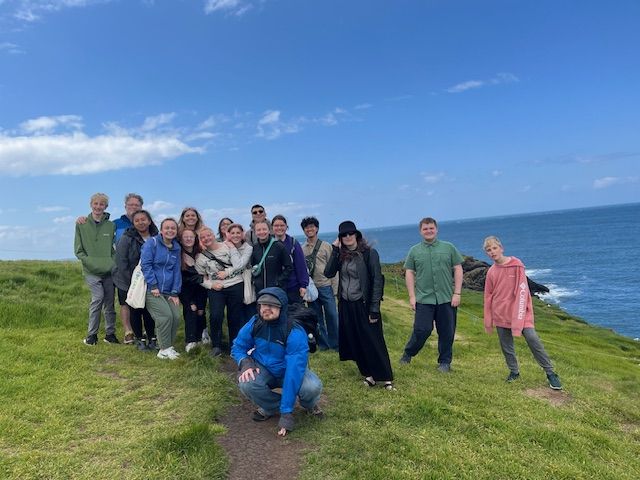
From left in back: Thomas, Kyle, Magaly,
Adriana, Mariana, Rolando. Front: Lindsey, Kiara, Lydia, Gracie, Hannah, Madeleiine, Brenton, Friesen, Wyatt, Leo. Front: Liam
After getting together for one last group photo, we headed back to the parking lot, where we got refreshments from the coffee shop and warmed up after the cold, windy experience. I finally softened my sour stomach with a sausage wrap and a hot chocolate.
–Wyatt Gauthier
